The good news for anyone looking for the best APS-C camera is that there are plenty of fantastic choices. They range from increasingly rare compact cameras to mirrorless cameras with astonishing specs.
Full-frame cameras might still reign supreme in the professional world. But it’s not unheard of for a pro to carve out a successful career with nothing more than an APS-C model. That’s why it’s still well worth investing in a crop-sensor camera.
For now, we’ve put together our selection of the best APS-C cameras for you to consider. There’s something for every photographer and every budget on this list. Continue reading to find out which camera is best for you.
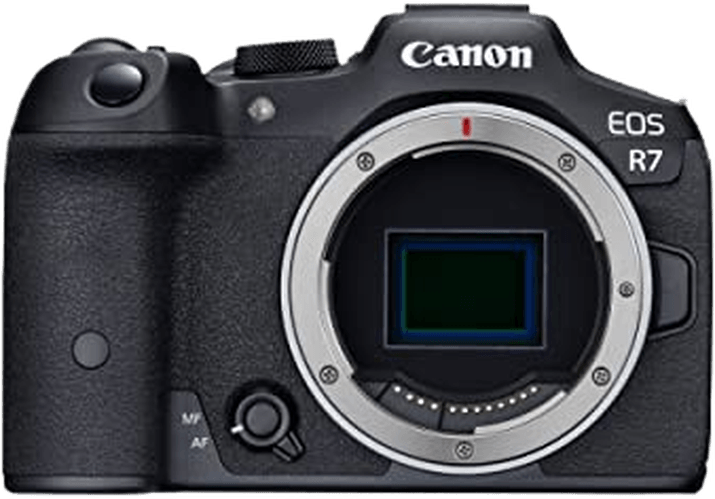
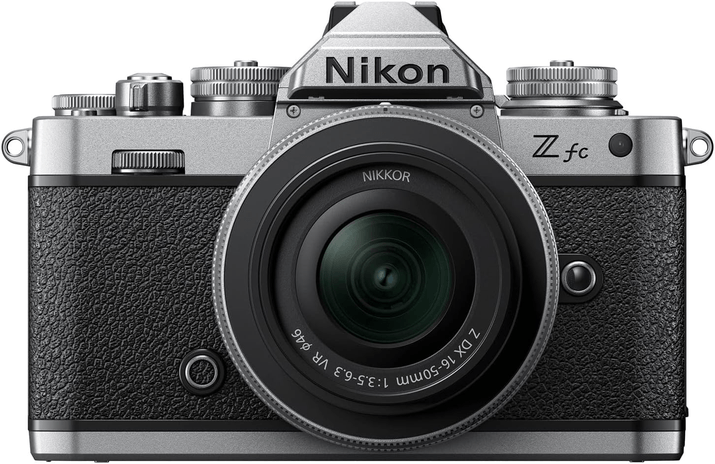
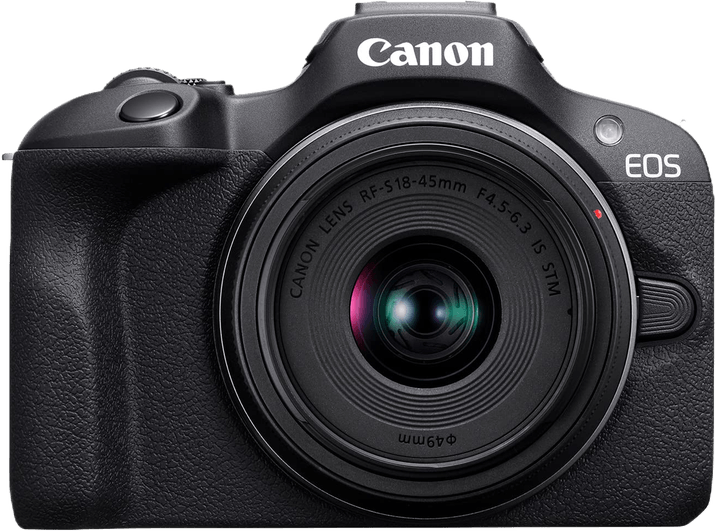
The very best APS-C cameras have very high pixel counts on their sensors. They feature some of the best autofocus (AF) and image stabilization (IS) systems available. Whether you are an APS-C fan or remain to be convinced, there’s something here to meet your needs.



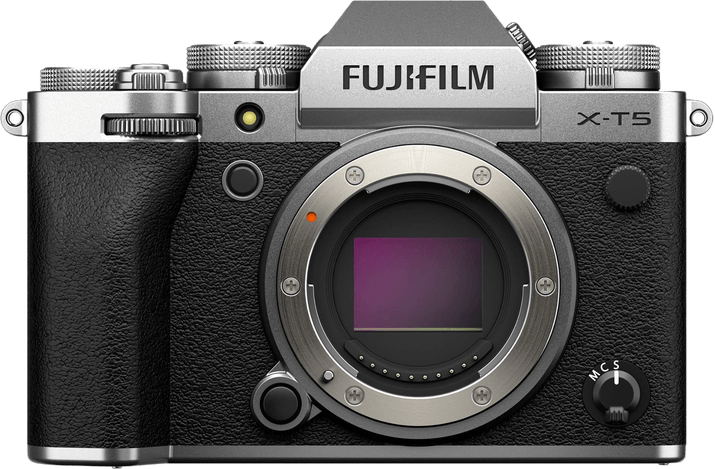
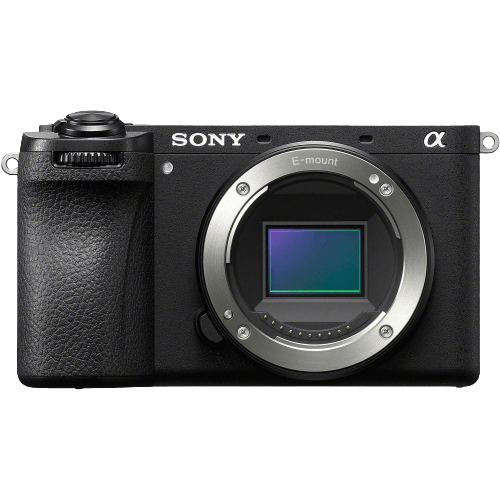
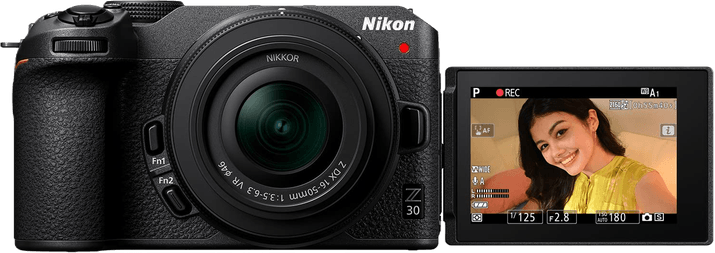
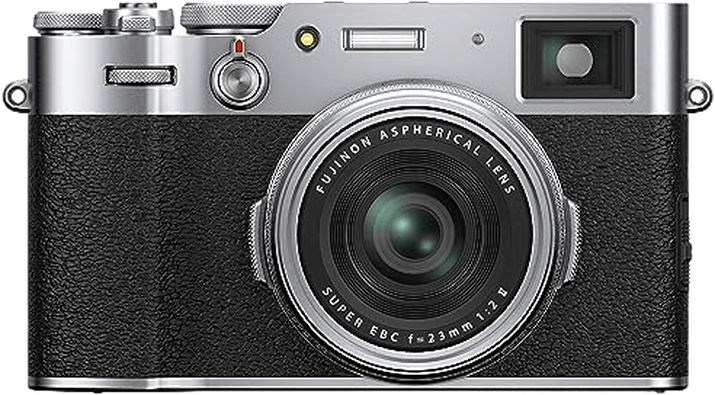
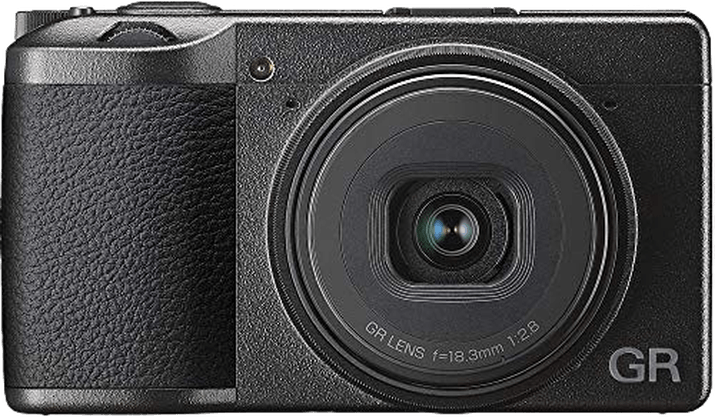
Now that we’ve seen a summary of the best APS-C cameras around, let’s take a closer look at why we like them.

| Released |
Released
2022
|
| Sensor Format |
Sensor Format
|
| Lens Mount |
Lens Mount
Canon RF
|
| Megapixels |
Megapixels
33 MP |
| Autofocus Points |
Autofocus Points
651 |
| Maximum ISO (Native) |
Maximum ISO (Native)
32,000 |
| Frame Rate |
Frame Rate
15 fps |
| In-body Stabilization |
In-body Stabilization
|
| Max Video Resolution |
Max Video Resolution
|
| Key Features |
Key Features
Self-leveling sensor, up to 195 fps burst speed
|
| Best For |
Best For
Anyone looking for a top-spec APS-C camera
|
If you want a more fully featured APS-C camera, then the Canon EOS R7 could be for you. It is blazingly fast, has excellent autofocus, and even has a self-leveling sensor! And all of this is in a body that’s substantially smaller than a DSLR.
You’ll love the sharpness of the EOS R7’s images. Not only is the sensor an impressive 32.3 MP, but its pixel density means the images are crisp.
In-body image stabilization keeps the sensor stable. And it’s the same mechanism that automatically levels the sensor as you shoot stills and video. This means you are less likely to need a tripod for stills or a gimbal for video.
You can shoot video at 4k and 60 fps or crank the frame rate up to 120 fps with 1080p video. The in-body IS, working in tandem with any lens IS, can help you achieve almost gimbal-steady shots.
The R7 gives you a rapid 15 fps burst mode when using the mechanical shutter, which is quick enough for high-level action photography. But if that isn’t quick enough, you also have an electronic shutter with a 30 fps burst rate. There’s a higher risk of distortion, but it is quick.
With Canon’s renowned Dual-Pixel CMOS AF system, the R7 delivers fast and reliable focusing. It uses 651 focus zones for quick target locking and dependable subject tracking, even with moving subjects.

| Released |
Released
2021
|
| Sensor Format |
Sensor Format
|
| Lens Mount |
Lens Mount
Nikon Z
|
| Megapixels |
Megapixels
21 MP |
| Autofocus Points |
Autofocus Points
209 |
| Maximum ISO (Native) |
Maximum ISO (Native)
51,200 |
| Frame Rate |
Frame Rate
11 fps |
| In-body Stabilization |
In-body Stabilization
|
| Max Video Resolution |
Max Video Resolution
|
| Key Features |
Key Features
Stylish design, durable metal frame, excellent AF
|
| Best For |
Best For
Rekindling that old-school feel with incredible modern image quality
|
The Nikon Z fc looks so good that you’d be forgiven for thinking it’s a case of style over function. But its real beauty lies in its blend of looks and photo capabilities.
The Z fc has a 20.7 MP sensor. This is capable of an impressive on-paper maximum native ISO of 51,200. Impressive on paper is one thing, but the Z fc performs well in the real world. You’ll be happy with anything shot up to 1,600 ISO. And realistically, you can even shoot up to 25,600 ISO and still get good results.
Because it’s a mirrorless camera, you get really good sensor coverage with the AF system. The 209 hybrid zones cover 87% vertical and 85% horizontal of the sensor. It’s a hybrid phase and contrast-detection system. It can detect and track human faces, animal faces, and eyes. And it will track and adjust exposure at up to 5 fps (11 fps with AF and AE lock).
One of the strengths of the Z fc is its connectivity. Videographers are big fans of mirrorless cameras. But you’re wasting your time if you can’t add an external microphone or if you can’t monitor the sound you’re recording. The Z fc covers that with jacks for both those functions.
It has HDMI, USB-C, Wi-Fi, and Bluetooth for an impressive set of connectivity. But there’s no GPS and only one SD card slot. There’s no built-in flash, but there is a hot shoe for firing a speedlite.
Both the LED touchscreen and the electronic viewfinder (EVF) are excellent. They are bright and clear, and there’s no perceptible lag.
Videographers will like the articulating screen and overall video performance. You can shoot 1080p at up to 120 fps and 4K at 30 fps.
There is a recording limit of 30 minutes, but this is common in a lot of cameras at this level. That might deter some filmmakers, but it’s a handy performer for online content and other short-form video work.
And that brings us on to the real delight of the Nikon Z fc. How it handles and how it looks. In real life, it’s surprisingly small. Because it looks like an old-fashioned SLR brick, you expect it to be the same size. But it is tiny by comparison, which is great for long photo shoots.
The aesthetics are beautiful. Metal dials engraved with numbers allow the tactile joy of physically controlling the settings. A tiny LCD screen to display your f-stop is a touch of modernity mixed with a retro look and feel. I think it looks best in faux leatherette and brushed metal, especially when paired with a matching DX 15-50mm lens.

| Released |
Released
2023
|
| Sensor Format |
Sensor Format
|
| Lens Mount |
Lens Mount
Canon RF
|
| Megapixels |
Megapixels
24 MP |
| Autofocus Points |
Autofocus Points
3,975 |
| Maximum ISO (Native) |
Maximum ISO (Native)
12,800 |
| Frame Rate |
Frame Rate
6.5 fps |
| In-body Stabilization |
In-body Stabilization
|
| Max Video Resolution |
Max Video Resolution
|
| Key Features |
Key Features
Dual Pixel AF system, excellent EVF
|
| Best For |
Best For
Anyone looking for a good-value Canon RF camera
|
The Canon EOS R100 is the lightest mirrorless camera with a viewfinder. It looks like a DSLR, but it’s much smaller. However, its performance matches many larger, more expensive cameras. It has a 24 MP sensor and shoots 4K video at 24 fps. And you can increase that to 120 fps for 1080p video.
The R100 gives you the excellent image quality you’d expect from a Canon sensor. And with the full fleet of RF lenses, you have a decent set of options. If that’s not enough, then a Canon EF-to-RF adaptor makes every EF and EF-S mount lens work perfectly. And that is a lot of lenses.
Bearing in mind that this is a budget-friendly camera, the specs are decent. The maximum ISO is 12,800, which is pretty low by modern standards. And to be fair, the sensor doesn’t handle even that maximum speed as well as some other cameras. But you’ll be fine using up to ISO 3,200. And for a compact, easy-to-use camera, that’s more than acceptable.
Likewise, the 3.5 fps burst speed with AF and AE tracking won’t make any headlines. But unless you’re shooting sports, it’s more than decent. And it will handle 6 fps with focus and exposure locked. That AF system uses 143 detection points if the camera selects them automatically. For manual selection, you have the choice of 3,975 points.
There’s no in-body IS and the screen is fixed. So you’ll need to decide if those are must-have features for you. But sensor quality, AF, and automatic exposure are strong positives for this camera. And some pros might sneer, but the built-in flash is a great addition to a camera of this type.

| Released |
Released
2022
|
| Sensor Format |
Sensor Format
|
| Lens Mount |
Lens Mount
Fujifilm X
|
| Megapixels |
Megapixels
40 MP |
| Autofocus Points |
Autofocus Points
425 |
| Maximum ISO (Native) |
Maximum ISO (Native)
12,800 |
| Frame Rate |
Frame Rate
15 fps |
| In-body Stabilization |
In-body Stabilization
|
| Max Video Resolution |
Max Video Resolution
|
| Key Features |
Key Features
AI-powered AF tracking, records 6.2K video
|
| Best For |
Best For
Photographers looking for a high-spec camera with a classic feel
|
The Fujifilm X-T5 is an APS-C powerhouse. Not only does it boast the most powerful sensor of any APS-C camera, it also produces professional quality video media.The body design is pretty stylish, too.
Many people suggest the APS-C X-T5 is nearly as good as full-frame cameras. The 40 MP sensor certainly outguns many full-frame cameras in terms of pixels. And the Pixel Shift mode offers incredible 160 MP images by creating composites in-camera.
Fujifilm makes the most of the mirrorless camera’s AF advantages, using 3.3 million on-sensor phase-detection pixels. That covers pretty much the whole sensor. An AI processor expands the type of subjects the AF system can recognize and track. This includes humans and animals, as well as planes, trains, and automobiles.
The burst rate is 15 fps with the mechanical shutter and increases to 20 fps with the electronic shutter. And it has the same unbelievable 1/180,000 s maximum shutter speed. We use the phrase “blink of an eye” to describe something that is very fast, but that shutter speed is 54,000 times faster!
Filmmakers will love the 6.2K video recording with 10-bit 4:2:2 color sampling. The footage is sharp, clear, and true to life. You also have 4K video at 60 fps or Full HD at 120 fps. The latter gives you high-quality slow-motion footage that’s ideal for capturing fast action.
You can also use the X-T5 as a high-resolution webcam. And thanks to the USB charging, you don’t need to worry about running out of battery on long records. The camera body also has ports for external mics and headphones.
The Fujifilm X-T5 is a good-looking, well-built camera that delivers excellent image quality. It is backed up by an extensive range of lenses. So you would have no problem building up an impressive camera system.

| Released |
Released
2023
|
| Sensor Format |
Sensor Format
|
| Lens Mount |
Lens Mount
Sony E
|
| Megapixels |
Megapixels
26 MP |
| Autofocus Points |
Autofocus Points
759 |
| Maximum ISO (Native) |
Maximum ISO (Native)
32,000 |
| Frame Rate |
Frame Rate
11 fps |
| In-body Stabilization |
In-body Stabilization
|
| Max Video Resolution |
Max Video Resolution
|
| Key Features |
Key Features
Excellent ISO range, up to 120 fps video
|
| Best For |
Best For
Anyone looking for a capable video and stills camera
|
Sony is known for having incredible autofocus, and the Sony a6700 carries on the tradition. But it’s not a one-trick pony. There are many aspects to this camera that make it a solid choice for an APS-C camera.
The sensor boasts 26 MP, which is plenty for most uses. It allows the a6700 to shoot 4K video at 120 fps, which is impressive. It shoots at up to 11 fps, which is faster than many pro-level cameras from just a few years back. And with a buffer that copes with 59 RAW images, it’s good enough for sports and wildlife photographers.
The AF system uses 759 phase-detection points to cover 95% of the sensor area. You can select a range of subjects, from humans, birds, and animals to planes and cars. The AF will track them as they move and keep focus locked on. It’s very effective.
One very handy feature is the 5-axis in-body IS. This works in conjunction with any image-stabilized lenses you use. The overall result is the ability to get great shots even when the light is low.
Image stabilization is also popular for video, and many filmmakers are fans of Sony cameras. The a6700 offers an impressive 120 fps 4K video option, but the footage is cropped. If you want the whole sensor, then you’re limited to 60 fps, which is still very good.
Something else that appeals to the video user is the fully articulating touch screen. It makes awkward camera angles or selfies a breeze. If you’re more a fan of a viewfinder, the a6700’s EVF is bright and can handle 120 fps refresh rates.
One advantage that APS-C has over full-frame cameras is their size. Sony’s a6700 uses the shape of a rangefinder camera to exploit the size benefits. But it doesn’t do away with the viewfinder completely. Not everyone likes the offset EVF. But it is better than no viewfinder in very bright conditions.
The Sony a6700 is a superb little camera that nicely balances the needs of photographers and videographers. But like most Sony cameras, the menu system leaves a lot to be desired. And in such a competitive market, that can be a problem.

| Released |
Released
2022
|
| Sensor Format |
Sensor Format
|
| Lens Mount |
Lens Mount
Nikon Z
|
| Megapixels |
Megapixels
20 MP |
| Autofocus Points |
Autofocus Points
209 |
| Maximum ISO (Native) |
Maximum ISO (Native)
51,200 |
| Frame Rate |
Frame Rate
11 fps |
| In-body Stabilization |
In-body Stabilization
|
| Max Video Resolution |
Max Video Resolution
|
| Key Features |
Key Features
Excellent performance at high ISOs, great AF tracking
|
| Best For |
Best For
Videographers looking for a fast-tracking AF system
|
If you’re an aspiring vlogger or content creator, then the Nikon Z30 is right APS-C camera for you. There’s no viewfinder, but the Z30 looks neat and tidy without one. The layout of the body and controls is as good as you can ask for. And as you’ll always be using the screen, you can place the rear controls for easy access.
The Z30 has a 20 MP sensor, which is relatively modest. But Nikon knows a thing or two about sensors, and you’ll get excellent image quality from this camera. Like many cameras in this review, it shoots 4K video at 30 fps or 1080p at 120 fps.
There are 209 hybrid AF points, using both contrast and phase detection. It works well, especially for face detection and tracking. And the Z30 performs exceptionally well at high ISOs. There is almost nothing sacrificed in quality up to 3,200 ISO. And you can shoot usable images all the way up to 204,800 ISO.
Those are unusual circumstances, however. We mainly want our pictures to be in focus, sharp, and well-exposed. This Nikon takes care of that. With no viewfinder, it’s important that the screen is good. And it is. It’s clear, bright, and can be viewed from any angle.
This is a great little camera with some minor annoyances. When you hold it in portrait orientation, the menus and buttons remain at 90 degrees. And there’s no in-body IS or built-in flash. Other than that, the Nikon Z30 shows us how good a compact APS-C mirrorless camera can be.

| Released |
Released
2020
|
| Sensor Format |
Sensor Format
|
| Lens Mount |
Lens Mount
Fixed
|
| Megapixels |
Megapixels
26 MP |
| Autofocus Points |
Autofocus Points
425 |
| Maximum ISO (Native) |
Maximum ISO (Native)
12,800 |
| Frame Rate |
Frame Rate
11 fps |
| In-body Stabilization |
In-body Stabilization
|
| Max Video Resolution |
Max Video Resolution
|
| Key Features |
Key Features
Superb looks, hybrid viewfinder, physical control dials
|
| Best For |
Best For
Retro lovers and anyone looking for a compact camera with traditional dials
|
The Fujifilm X100V is different from the other cameras we have reviewed so far. It is one of two compact APS-C cameras in this review. Smartphones have largely taken over the compact camera market. But the X100V has bucked that trend, and at times it’s had a significant back-order list. And it’s easy to see why.
In any retro camera beauty contest, the X110V would do well. Its old-school styling is matched by the quality of its construction. Lots of metal, including the physical knobs and dials, add to that feel of a crafted object. And those same dials mean that this is a great camera to learn all about photography and exposure.
The X100V has a 26 MP sensor that delivers beautifully sharp images. As a compact camera, we can also talk about the lens that comes attached to the body. It is a 23mm, equivalent to a 35mm lens on a full-frame sensor. It’s a classic length lens for press photographers. And there’s enough detail in the X100V sensor to allow one of this camera’s very neat ideas. A simple turn of a dial gives you a 50mm and 70mm digital zoom.
Perhaps one of the X100V’s smartest features is found in the EVF. This is a hybrid viewfinder offering optical and electronic options. You can switch between the two easily. And most impressively, you can choose the optical viewfinder with digital overlays and immediate digital playback.
The AF system is fast and accurate, and the AE is impressive. One of the most convenient aspects is the ease with which the X100V balances fill-in flash from the built-in flash. It makes shooting in bright light with a fill-in flash a breeze. And it syncs with the mechanical shutter all the way up to 1/4000 s, which is extremely useful.
The electronic shutter leaves the mechanical one in the dust, with a maximum of 1/32,678 s speed. And if the light is still too bright for the effect you want, there is a selectable 4-stop neutral density filter. This is another clever touch, although the shutter speed dial only goes up to 4000. But if you’re using the electronic shutter, it selects speeds above that automatically.
The Fujifilm X100V is a wonderful camera. It’s as easy to use as a point-and-shoot camera and has the image quality of more “pro-minded” cameras. It is especially good at photographing people, with its fast and reliable AF and AE. It’s not such a great video camera, and the limitations of the fixed lens mean you won’t be shooting many sporting events. But it’s a camera you’ll want to take with you (and use) everywhere!

| Released |
Released
2018
|
| Sensor Format |
Sensor Format
|
| Lens Mount |
Lens Mount
Fixed
|
| Megapixels |
Megapixels
24 MP |
| Autofocus Points |
Autofocus Points
1 |
| Maximum ISO (Native) |
Maximum ISO (Native)
102,400 |
| Frame Rate |
Frame Rate
4 fps |
| In-body Stabilization |
In-body Stabilization
|
| Max Video Resolution |
Max Video Resolution
|
| Key Features |
Key Features
Very compact size, in-body stabilization
|
| Best For |
Best For
Anyone who wants a very small compact camera with great performance
|
The Ricoh GR III is another beloved compact APS-C camera. It’s roughly half the price of the Fujifilm X100V. But it is no slouch in specs or performance.
It has a very capable 26 MP sensor, 3-axis in-body IS, and an f/2.8 lens. At this price point, it’s impressive to see an ultrasonic sensor cleaner as well (although dust on the lens is less of a problem for fixed-lens cameras). Autofocus uses an on-sensor hybrid contrast and phase-detection system.
The AF has face detection and tracking, although some users find it to be a touch unreliable. However, with a 28mm equivalent lens, tracking fast-moving objects is unlikely to be a frequent activity. Shooting sweeping landscapes is easy with the handy infinity lock focus mode.
The GR III has no viewfinder. This leads to a small camera that will fit in your shirt pocket. But the GR III has a crisp and clear touchscreen. And because it puts many of its controls on the screen, it has fewer physical buttons on the camera body.
Most photographers know this isn’t the camera for serious video work. Video is limited to 1080p, and if your main use is videography, look elsewhere. But for stills, the resolution, the AF, and the high dynamic range make this an attractive choice.
There is an impressive level of ISO permanence. You can comfortably shoot with -5 stops exposure in RAW and pull up the details in post. JPEG rendition lacks a little “pop” for my liking, but you can tweak these things in-camera to get the effect you want.
There’s a lot of fun to be had with a camera like the Ricoh GR III. I’m not as convinced that it saves the compact camera sector as the Fujifilm X100V might. For the same money, I can get a top smartphone. But it’s a fine piece of gear that’s worth considering.
There are many things to think about when choosing the best APS-C camera. There is such a big range of products available that it can be confusing. So we’ve unpicked some of the main things you need to know before making your choice.
The Advanced Photo System (APS) actually started out as a film-based format. It added some digital information storage and some format flexibility to film cameras. You could shoot a conventional 4 x 6, 16:9 format 4 x 7″, or a panoramic 4 x 11″.
APS, as a format, was ultimately (and in a few short years) undone by digital. So in the digital world, we have its grandchild, the APS-C. Unlike the original APS, which was uniform across all manufacturers, APS-C isn’t quite that standard. All APS-C cameras have the same size sensor, except Canon. The Canon sensor is a fraction smaller than all the others.
For comparison, the APS-C sensor is roughly twice the size of the old 110 film. But it’s more than ten times the size of the biggest iPhone sensor. A full-frame sensor is 1.5/1.6 times bigger than an APS-C sensor. If nothing else, this shows that sensor size is not the only factor that affects image quality.
When I bought my first DSLR, it was an APS-C, simply because that’s what I could afford. And I bought a Canon, as I already had a couple of lenses that would fit. So price is one of the advantages of an APS-C camera, especially compared to a full-frame equivalent.
At the other end of the size equation, the APS-C sensor is significantly larger than even the best smartphone cameras. Size isn’t everything, but a larger sensor tends to have better low-light performance. What the APS-C cameras in this review show is that you can get exceptional-quality images from this sensor size. The truth is for most users, most of the time, you won’t need anything bigger.
For many, the APS-C DSLR made them want to switch to a full-frame version. The demise of the APS-C DSLR is probably more advanced even than the full-frame DSLR. Mirrorless cameras are unstoppable in the quality end of the market.
Compact cameras, on the other hand, are losing out to smartphone cameras every day.
Mirrorless APS-C cameras with interchangeable lenses probably have a bright future. Full-frame cameras remain the choice of most pros. But you’ll find plenty of pros, especially videographers, who do just fine with an APS-C. And it makes sense. If the main destination of your video is social media, APS-C will fit the bill. You save money and neck pain by choosing the smaller, lighter device.
There’s no doubt that the quality of the cameras in this review is quite remarkable. The image quality, autofocus capability, and overall versatility now reach astonishing levels. Once you decide what you need from a camera, you’re sure to find one here to suit your needs!



